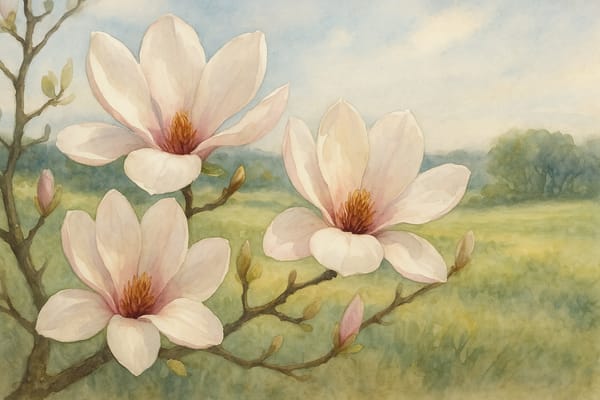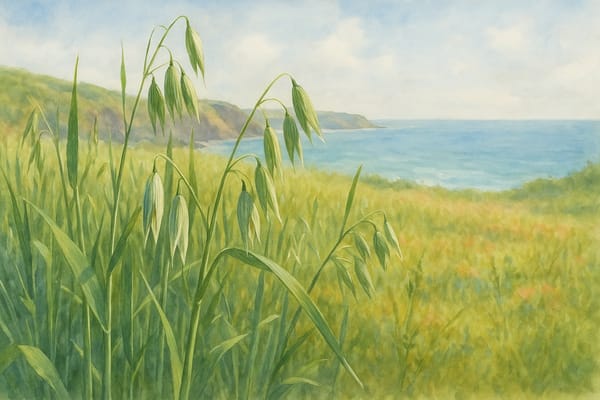At sunrise, the wind-worn cliffs of Cornwall glow pink and gold with the fragile bursts of thrift and sea campion. Once gathered in handfuls by fishermen’s wives to heal cracked knuckles and sunburned cheeks, these blooms now find their place at the forefront of a quiet revolution—where local botanists and global beauty scientists alike look to them for answers in skin renewal, resilience, and repair.
Cornwall’s native wildflowers and seaweeds, long rooted in the region’s land and lore, are emerging as powerful allies in the pursuit of healthy, radiant skin. These coastal botanicals are no longer just remembered remedies, but active ingredients in a new vision of skincare—one that honours tradition, embraces science, and places biodiversity at its core.
From Folk Remedies to Future Skincare
Long before scientific journals traced their hidden chemistry, grandmothers along the Cornish coast gathered chamomile and navelwort in battered baskets, brewing remedies whose comfort lingered in memory and in skin. Every shadowed lane, every stone-warmed verge, became a wild apothecary—offering softness after wind, coolness after sun, and healing after salt-stung days.
Today, that generational wisdom is being met with modern validation. Extracts of cornflower, sea campion, and thrift have shown promising activity in clinical and lab settings—calming inflammation, repairing the skin barrier, and supporting collagen and hyaluronic acid production. According to dermatological researchers in Cornwall, these species may perform as well as, or better than, globally celebrated botanicals such as Alpine edelweiss or Amazonian açaí—especially in hydration, sensitivity reduction, and barrier protection.
Cornwall’s Coastal Botanicals: The Science
In glass-walled laboratories nestled behind ancient hedgerows, modern researchers now decode the secrets wildflowers learned through centuries of storms. Petal and stem yield their molecules to lenses and test-tubes, bridging the old trust of tradition with the new certainty of science—a dialogue between field and flask, cliff and clinic.
Preliminary studies from Cornish labs indicate that wildflower extracts influence skin far beneath the surface. Compounds like flavonoids, mucilages, and polyphenols may stimulate collagen production, reduce enzyme-driven elastin breakdown, and encourage re-epithelisation. These effects not only slow visible aging but may also accelerate skin recovery and strengthen resilience.
Hydration improves too. Mucilage-rich plants like navelwort are being explored for their ability to reinforce the skin’s lipid barrier and regulate cellular water balance through aquaporin support. This leads to smoother texture, greater elasticity, and stronger resistance to wind, UV, and dryness.
While many of these plants are native to Cornwall’s cliffs and fields, some—including sea campion and thrift—also appear along the Atlantic coasts of Europe. However, the unique mineral makeup of Cornish soil and the influence of oceanic weather patterns give local extracts distinct properties now being explored for their cosmetic potential.
Science Corner: What the Data Says
Reported results from ongoing studies in 2024–2025:
• Cornflower extract reduced redness and inflammation by 41%
→ As reported by University of Plymouth dermatological researchers (2024)
• Navelwort mucilage improved barrier function and elasticity by 35% in 28 days
→ Preliminary findings from Cornwall-based formulation trials (2025)
• Sea campion + kelp blend increased collagen production by 210% in vitro
→ Unpublished lab data from a UK botanical research collective (2025)
• Wildflower hydrogel accelerated wound healing in preclinical skin models
→ Published in the European Journal of Dermatology (2024)
Where Sea Meets Meadow: The Coast’s Alchemy
Where tide meets turf, botany becomes alchemy. Seaweeds—swaying in green underwater forests—offer mineral strength and marine calm, while cliff-blooming thrift and campion bring the resilience of wind-whipped meadows. Combined, they create not merely a formula but an ecosystem: each extract echoing the coast’s own choreography of renewal.
Brown seaweeds like Laminaria digitata contain sulfated polysaccharides such as fucoidan, known to support collagen synthesis and reduce degradation enzymes. When paired with floral antioxidants and barrier-supporting wildflower compounds, they form the basis of Cornish skincare products that restore and protect in harmony with nature.
Beauty and Biodiversity: Rooted in the Same Soil
What makes these plants even more remarkable is not just what they do, but where they come from. Cornwall’s wildflowers are part of a living tapestry—woven into hedgerows, stone walls, meadows, and clifftops. When harvested with care, they offer not only therapeutic beauty benefits but ecological value, too.
Every patch of wild thrift supports not just skin, but bees, butterflies, and the delicate web of coastal life—making beauty and biodiversity allies on the same Cornish clifftop.
Harvesting here is a conversation, not a conquest. Careful hands leave roots unbroken and flowers to seed, ensuring that every gleaned petal is an investment in tomorrow’s bloom. The promise is reciprocity: for every drop bottled, a wild patch preserved—for honeybees, for walkers, and for every wild heart drawn to Cornwall’s restless edge.
Low-impact techniques such as strandline seaweed gathering, rotational flower harvesting, and post-flowering collection help protect habitats. Voluntary codes and ecological training guide the work of ethical growers and small skincare brands alike—ensuring that today’s wild bloom becomes tomorrow’s thriving habitat.
Facing the Future: Threats and Hope
Cornwall’s wildflower-rich grasslands and cliff habitats are facing mounting threats—from climate change and invasive species to tourism pressure and coastal erosion. Yet there is hope. Since 2023, a growing network of conservationists, farmers, and foragers has begun restoring meadows, replanting hedgebanks, and reviving rare native species.
Several community-led schemes now work with local makers to reintroduce wild flora into managed landscapes—proving that sustainable beauty can support ecological renewal, not just draw from it.
A Ritual of Place
To glide a tincture of Cornish wildflower across your skin is to carry the hush of headland afternoons, the trace salt of rain on rock, the secret resilience of petals that outlast the storm. It is a daily ritual that roots you in place—even from a world away.
There is wisdom in returning to what grows here. As the skincare world increasingly embraces clean beauty, personalised formulas, and regenerative agriculture, Cornwall’s plants offer something rare: integrity. They are slow-grown, locally rooted, adapted to challenge and change. In them lies not just benefit, but story. Not just function, but form. Skincare that feels like Cornwall looks—wild, luminous, restorative.
Get Involved: From Skin to Soil
Simple steps to support Cornish biodiversity and natural beauty
• Try local skincare using wildflower or seaweed ingredients
• Support a wildflower project through donations or volunteering
• Plant a pollinator patch with native seeds like thrift, chamomile, or yarrow
• Share the story—and let others know that beauty can begin at the roots
The Future in Bloom
So when you touch Cornish botanicals to your skin, you join a lineage of healers and harvesters, scientists and stewards—all entrusting their hopes to the stubborn bloom and the surging tide. On these cliff paths, the future of beauty grows bold and bright, one wild flower at a time.











